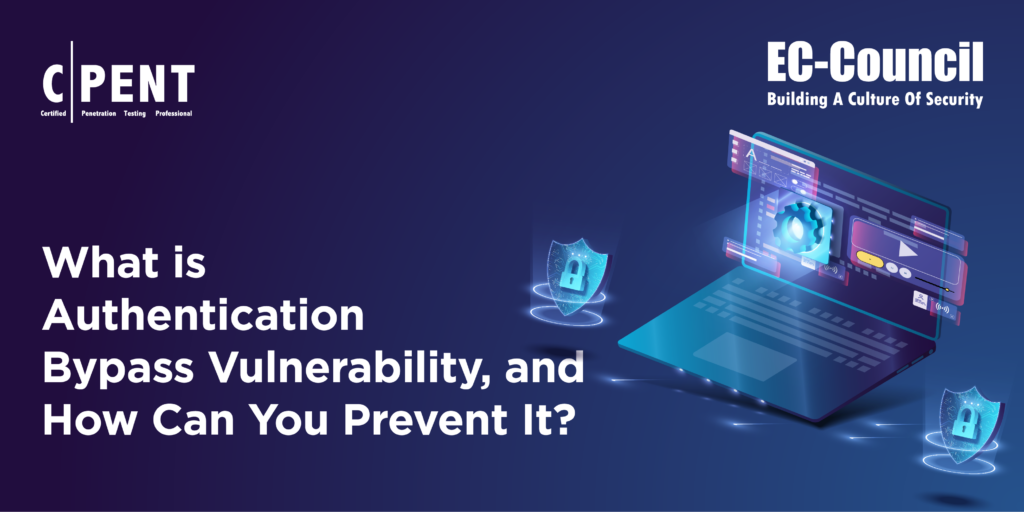Authentication — the ability of users to prove who they say they are — is fundamental to cybersecurity. By authenticating their identity, users can access restricted resources they need to do their jobs.
Unfortunately, authentication methods aren’t always foolproof. When malicious actors can pass themselves off as legitimate users, this attack is known as an authentication bypass, and the resulting security flaw is called an authentication bypass vulnerability. This article will explore what authentication bypass vulnerabilities are and discuss examples of common attacks and how to prevent them.
Authentication Bypass Vulnerability Explained
Any software or web application that asks users for their login credentials relies on authentication. When a user’s identity is established, the application can provide the appropriate privileges and information to the user, depending on that identity.
Usernames and passwords are the most common authentication method. Other techniques include token-based authentication (using a physical device such as a smartphone or ID card) and biometric authentication (e.g., fingerprint scans and voice identification).
However, savvy attackers often break these authentication methods, imitating a valid user to gain access to an IT system. In other words, the attacker can bypass the authentication mechanism that an application uses to verify identities, all without having to go through the authentication process. When this occurs, it’s known as an authentication bypass, and the associated security flaw is known as an authentication bypass vulnerability
How Can Authentication Bypass Vulnerability Be Exploited?
Once attackers are inside an IT environment using an authentication bypass vulnerability, how can this be exploited? There are several malicious activities that attackers can perform after performing an authentication bypass, including:
- Data breaches: If the user whose identity has been stolen has access to confidential, sensitive, or restricted data, the attacker can use this access to exfiltrate information. Data breaches are one of the most common — and most devastating — types of cyberattacks. According to IBM, the average cost of a data breach worldwide is $4.35 million.
- Espionage: More sophisticated attackers may use an authentication bypass vulnerability to conduct long-term espionage on a target, often with political or financial motives. They may install spyware to surveil users’ activities or even subtly sabotage the organization by modifying or deleting files.
- Ransomware: Attackers motivated primarily by greed may use an authentication bypass vulnerability as an opportunity to install ransomware on the network. This damaging form of malware encrypts the victim’s files and demands a hefty ransom before they can be decrypted.
- Privilege escalation: Attackers often use an authentication bypass to gain a “foothold” inside a network as a regular user. Once inside, the attacker has greater maneuverability to attempt to take over administrative accounts and other machines. In a January 2023 attack, for example, hackers used an authentication bypass vulnerability in the Cacti monitoring tool to install Mirai botnet software, turning victims’ computers into unwitting “zombies” to carry out the attackers’ plans.
Examples of Authentication Bypass Vulnerability
Many examples of authentication bypass vulnerabilities exist, depending on the precise authentication method used. This section will go over some of the most common ways attackers perform an authentication bypass.
1. Forced browsing
Forced browsing is perhaps the most “brute-force” method of authentication bypass. In forced browsing, attackers try to navigate directly to a restricted resource without providing authentication credentials. One simple example is a website with an unprotected administration page, e.g., https://www.example.com/admin.php.
Another common example of forced browsing is the insecure direct object reference (IDOR) vulnerability. In an IDOR vulnerability, attackers use their knowledge of the application’s structure to access resources intended for other users. For example, if an attacker creates an account with the following URL
https://www.example.com/user/8201
it can be inferred that the page for the following user to create an account is available at the URL
https://www.example.com/user/8202
2. SQL injection
SQL injection is a nefarious technique for bypassing authentication protocols, which involves manipulating a SQL relational database. According to the Open Web Application Security Project (OWASP), injection attacks such as SQL injection are the third most serious web application vulnerability, with 274,000 such vulnerabilities detected.
Specifically, a SQL injection involves “injecting” malicious SQL code into the input fields of a web application. This allows the attacker to execute unauthorized SQL commands that retrieve sensitive information from a database, create new user accounts, overwrite stored data, and more. To defend against SQL injections, web applications must “sanitize” and validate user inputs, preventing malicious code from being executed.
3. Third-party vulnerabilities
Sometimes, the security vulnerability is not with the software or web application itself but with a third party that handles the authentication process. To solve these issues, developers need to uninstall the third-party code or upgrade to a newer version that fixes the vulnerability.
Preventing Authentication Bypass Vulnerability
Authentication bypass vulnerabilities are some of the most pernicious security flaws for software and web applications. If left unpatched, these vulnerabilities can lead to devastating cyberattacks and data breaches, putting an organization’s reputation and existence at risk.
The good news is that there are defenses against authentication bypass vulnerabilities. Perhaps penetration testing is the most effective way to prevent authentication bypass vulnerabilities. In penetration testing, IT security professionals simulate an attack against a given system or network, probing it for various flaws and holes. Once penetration testers produce a list of vulnerabilities and their severity, the organization can draw up a plan of attack for which issues to address first and how to fix them.
Why Should You Pursue the CPENTAI?
Penetration testing is an excellent way to detect authentication bypass vulnerabilities and other IT security flaws. It’s no surprise, then, that demand for penetration testers and other cybersecurity professionals is soaring as companies realize the need to defend against cyberattacks.
Are you interested in becoming a penetration tester equipped with AI-powered pentesting skills? EC-Council’s CPENTAI (Certified Penetration Testing Professional) program offers extensive real-world training that helps students master the tools and techniques of penetration testing. The CPENTAI certification provides the right combination of theoretical and practical knowledge, 110+ hands-on labs, and live cyber ranges that you need for an in-demand job in penetration testing.
Ready to jumpstart your career in cybersecurity? Learn more about EC-Council’s CPENTAI certification and begin your IT security training.
References
- IBM Security Cost of a Data Breach Report 2022. (2022). https://www.ibm.com/downloads/cas/3R8N1DZJ
- Hackers exploit Cacti critical bugs to install malware, open reverse shells. (2023). https://www.bleepingcomputer.com/news/security/hackers-exploit-cacti-critical-bug-to-install-malware-open-reverse-shells/
- A03 Injection – OWASP Top 10:2021. (2021). https://owasp.org/Top10/A03_2021-Injection/
About the Author
David Tidmarsh is a programmer and writer. He has worked as a software developer at MIT, holds a BA in history from Yale, and is currently a graduate student in computer science at UT Austin.










